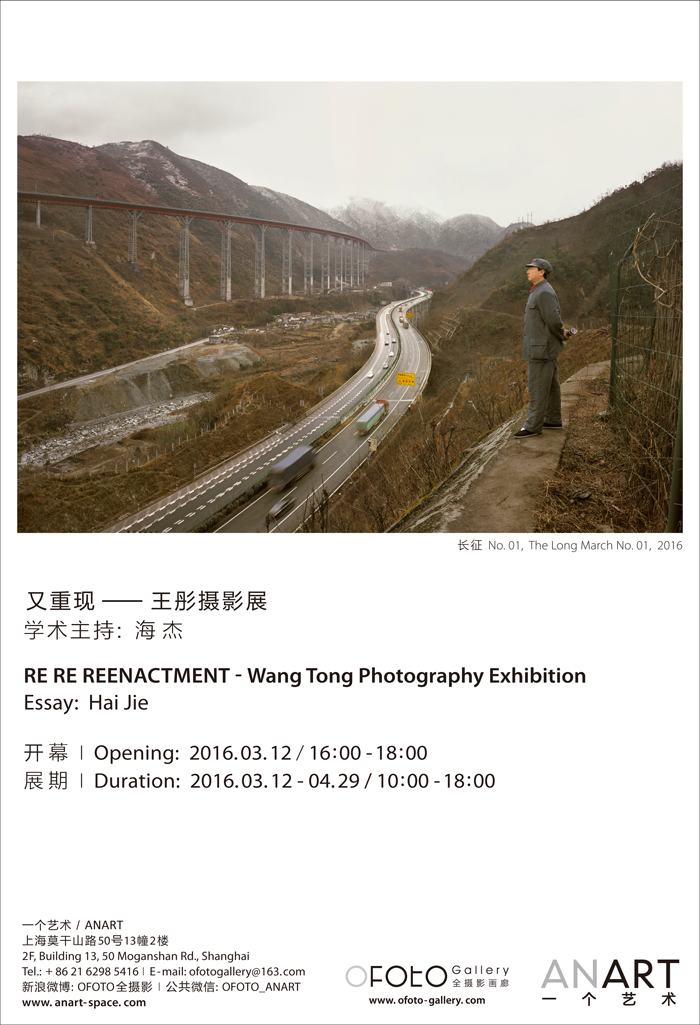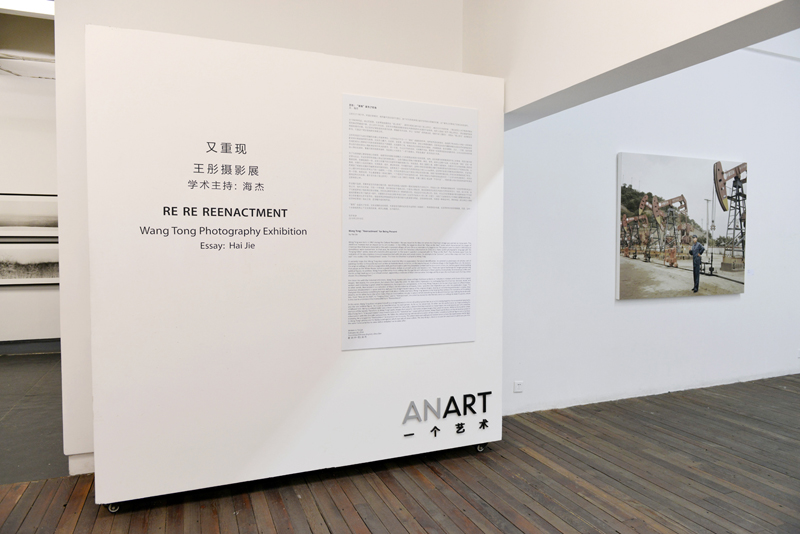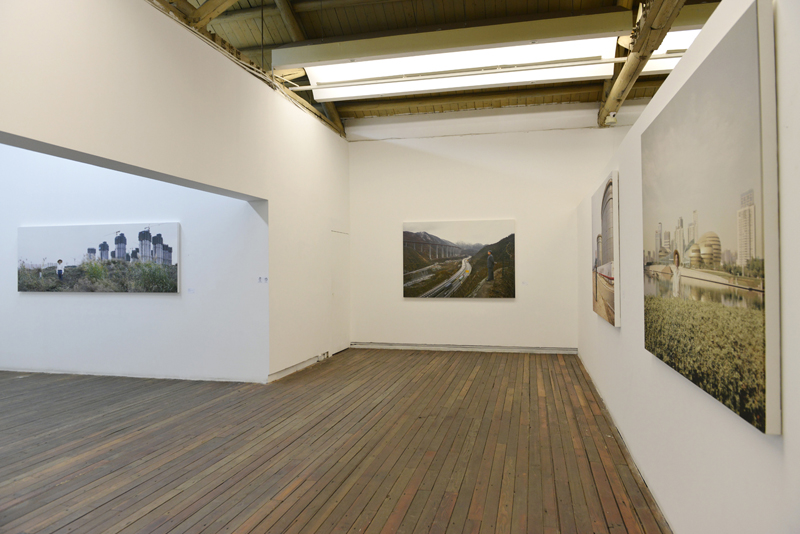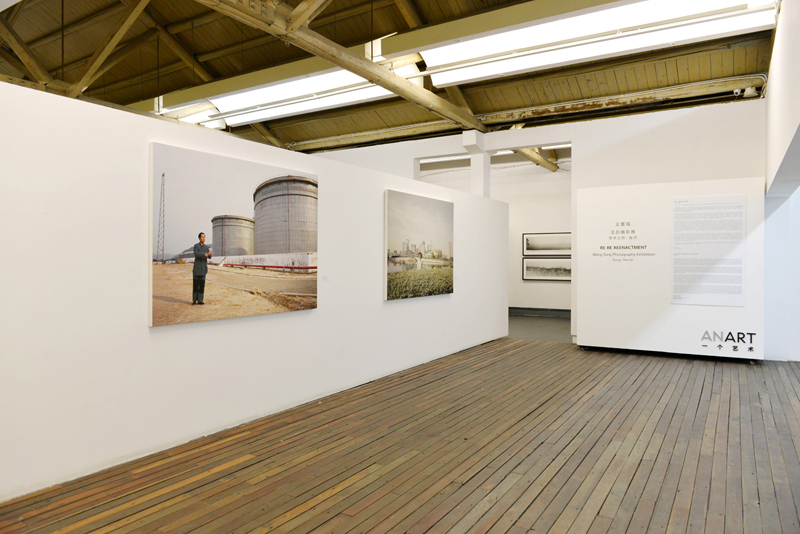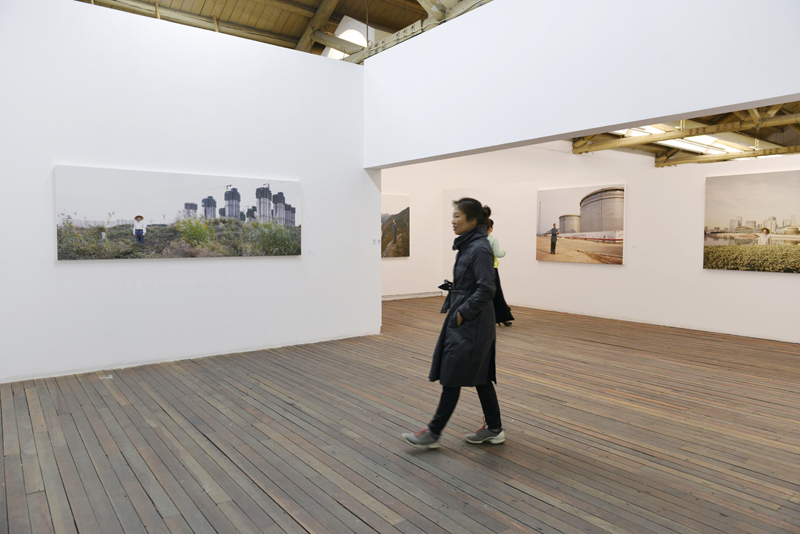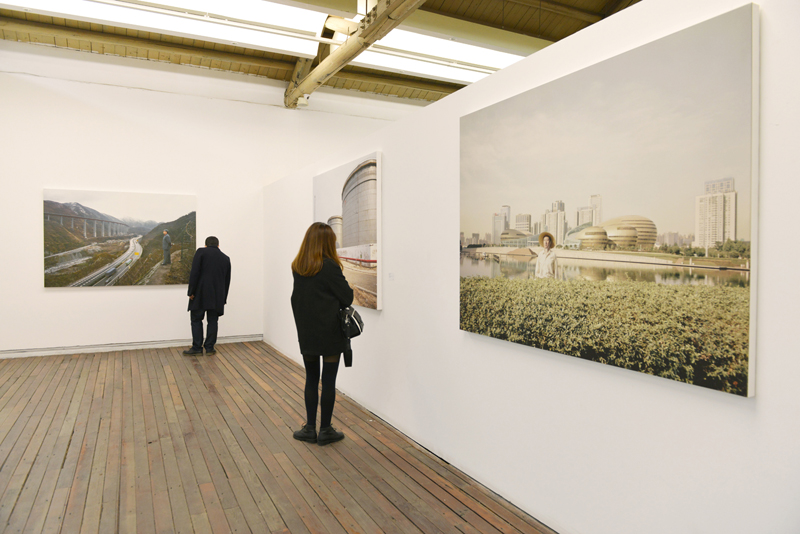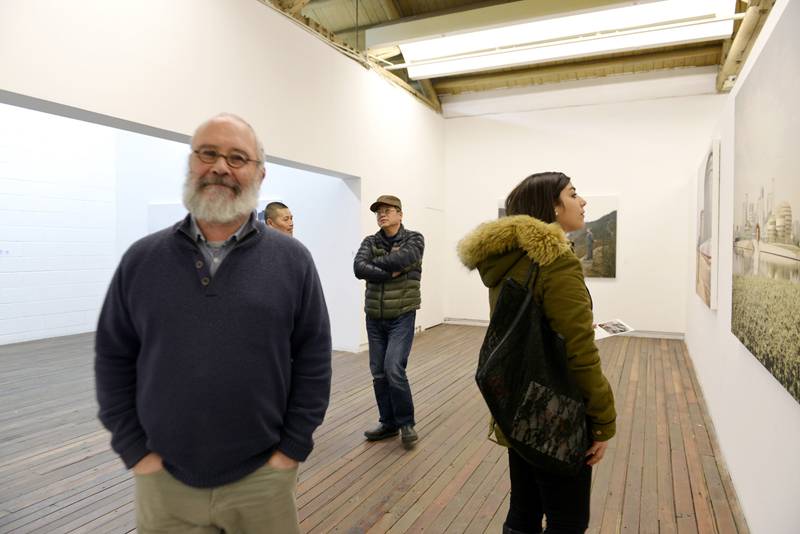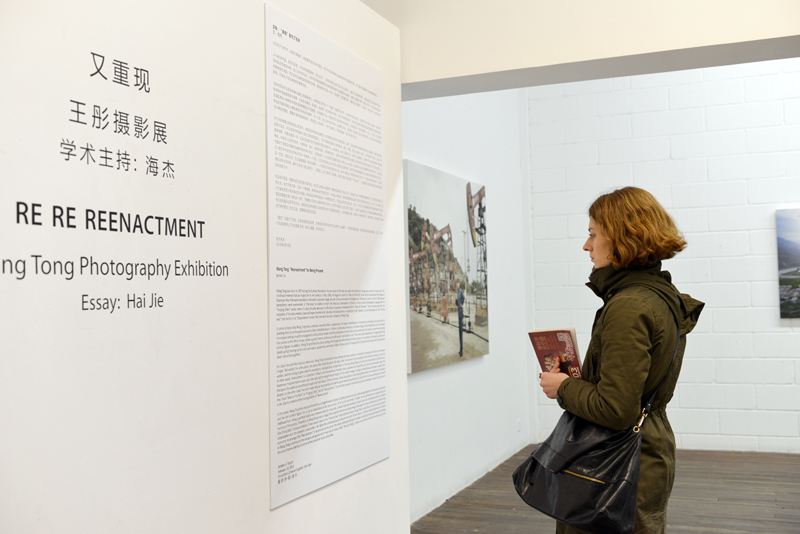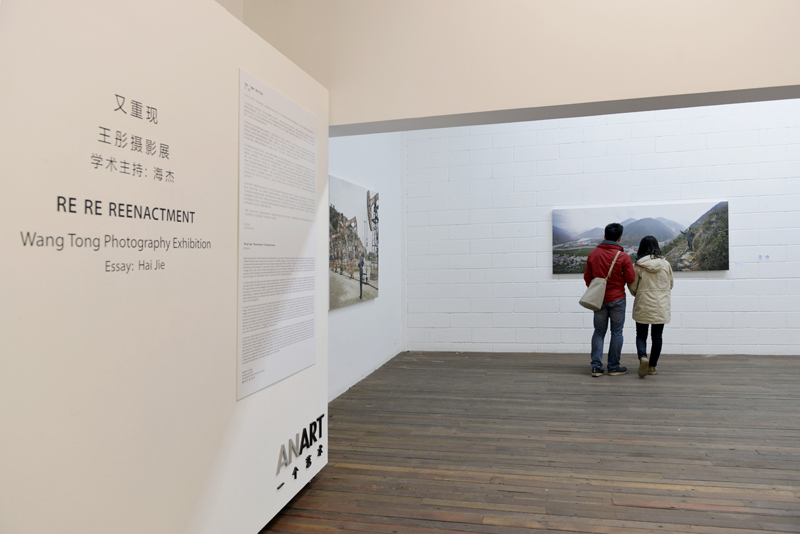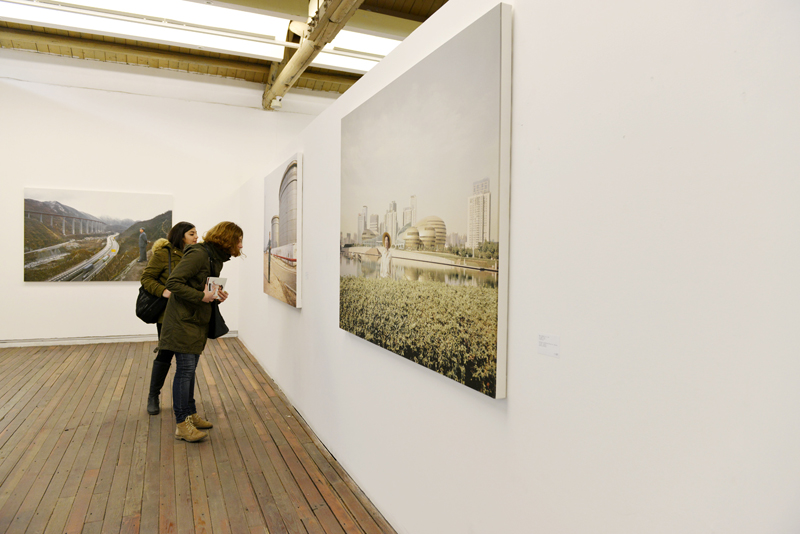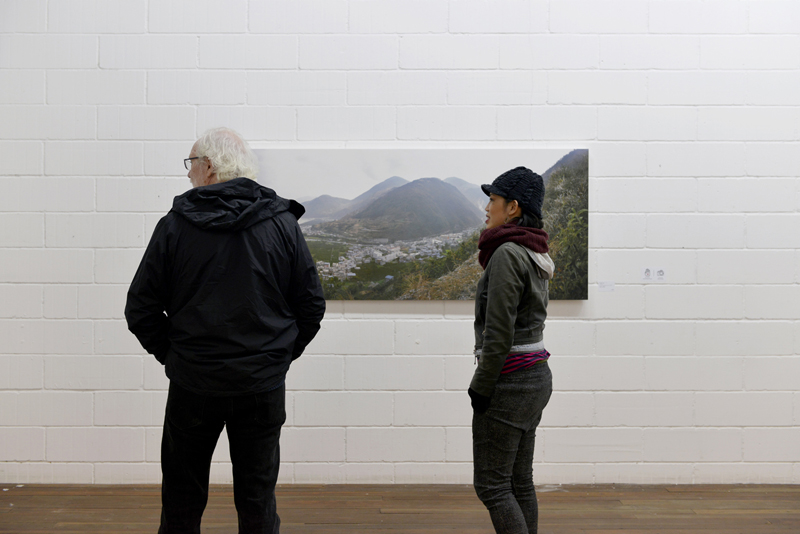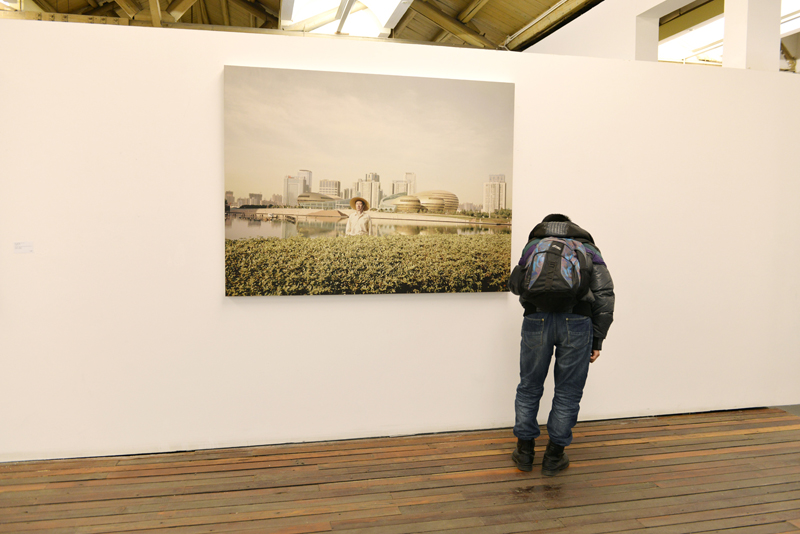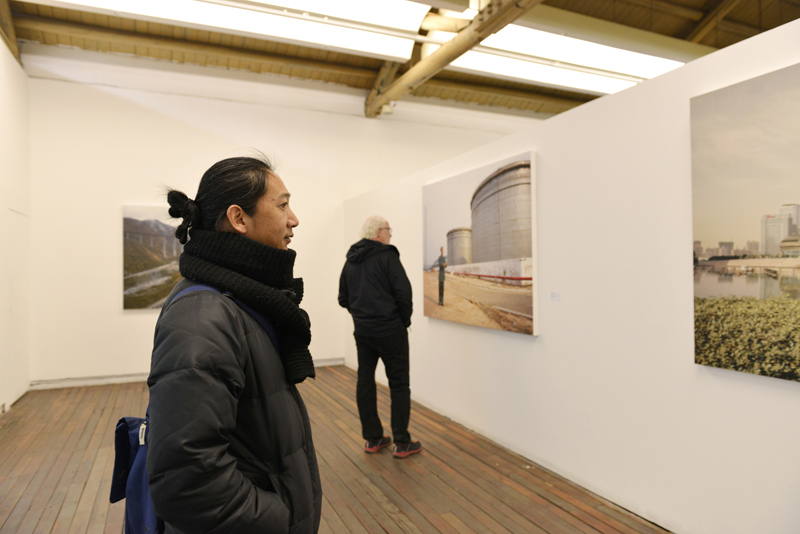It certainly helps that Wang Tong does somehow resemble Mao in appearance. For easier identification, he selected as prototypes old photos and oil paintings familiar to the public eye such as Mao at Beidaihe Beach, in Yan’an, on the way to Anyuan, in a Henan village, in the Yangtze River, etc. He replaces the original settings in which propagandists deify political leaders with the presentday context such as on a construction site, before a government building that passes as the White House, before a grand theatre, before an aircraft carrier and beside a river. These are typical backdrops for images glamorizing political figures. In addition, Wang Tong deliberately chose settings like Orange Isle with reference to Mao’s poetry. In one photo, he dressed up as Mao and stands up high looking out to a railroad viaduct, apparently a reminder of Mao’s famous verse "A bridge will fly to span the north and south,Turning a deep chasm into a thoroughfare."
For closer ties with the historical references, Wang Tong intentionally chose settings that bear symbolic or metaphoric relations with those of the original images. Not exactly the same places, but places that make the point. He does comic impressions by portraying how the Chairman dressed, stood, and walked, and mimicking to great detail his expressions, hand gestures, and postures. In this way, Wang Tong puts on his own show based on official history. In other words, Reenactment is a collection of Mao’s old monodramas of travels, hikes, speeches and inspections put onto the postmodern stage. The humorous misplacement in space and time defused the straight-faced majesty of the original images, leaving an entertaining postmodern cosplay show that gives the audience something to laugh and think about. Onthe one hand, Wang Tong appears to be helping Mao witness the realization of his wildest dreams; on the other hand, the artist makes Mao an incompatible intruder to places where everything had to do with him but now nothing has to do with him. From “Mao on the Wall”, to “Forging Cities”, and to “Reenactment”, the artist has moved to intentionally construct settings to make his points, which is the clue to understand the incompatibility in “Reenactment".
In this series, Wang Tong does not pose himself as a straightforward criticizer of political power but as an artist sewing together the economical spectacles and the late political figure. He is just as bewildered as the next person. As far as I’m concerned, I’d rather see his performance as impersonating his childhood hero. Being a political leader was a dream shared by many kids, a dream that later evolved as reason took over and became part of a collective memory of the society. Therefore, in Wang Tong’s work, images that speak for memories eclipse images that speak for values. While works by other artists (like Zhang Dali’s "A Second History") may reveal cracks in the “historical fact” about political leaders, Wang Tong’s works focus on the miraculous speed of urbanization with the dramatic juxtaposition. He fables the embarrassing and absurd encounter of two myths, a mythical political figure and a mythical economy. He arranged the “Reenactment” to be present at the scene. The urban landscape with grand modern constructions like expressways and bridges in Wang Tong’s photos are the background against which two sets of views collide. The only thing is, there is no cure for anachronism when you jam into the same frame what has to come before and what has to come after.
February 18, 2016
Translation: Chen Dan
